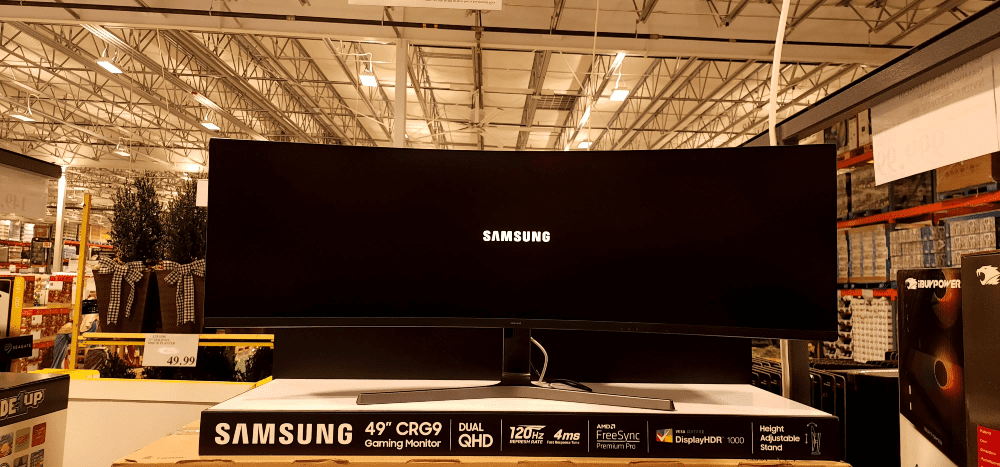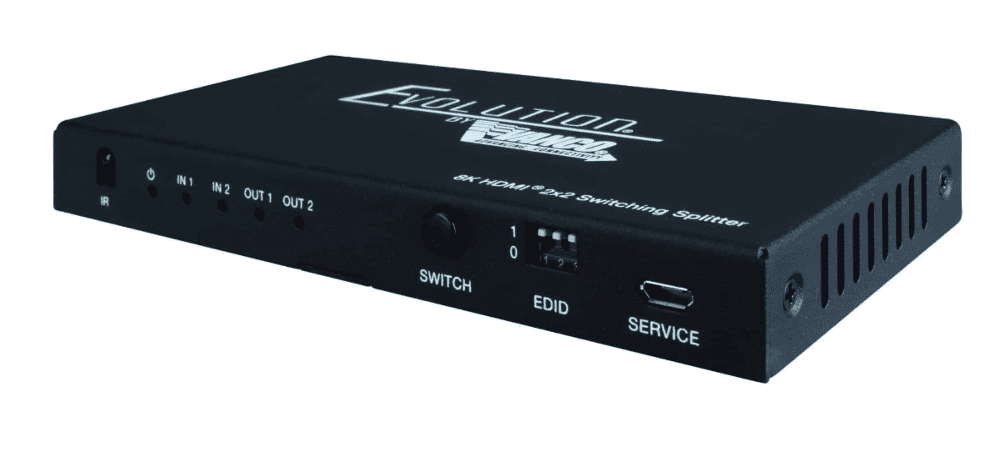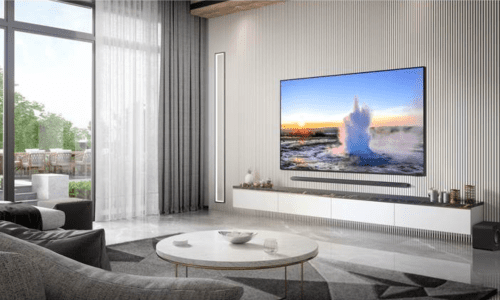What a long way we’ve come to have 8K video today. After approximately 60 years of living with the NTSC TV format, which started with black-and-white images on small screens, to 480i/480p DVD resolutions that were the envy of video enthusiasts of the 1990s, recent happenings in the home video market have been fast and furious.
Progressing from 720p/1080i, to 1080p HD video, and into 4K roughly a decade ago, the past few years have seen an increase in the number of 8K televisions that have been made available. The Consumer Technology Association (CTA) helped to kick off the evolution from 4K to 8K back in the fall of 2019 when it announced an 8K display definition and logo program.
Today, not quite five years later, popular TV manufacturers including Samsung, Sony, LG, and TCL all offer 8K products at a range of prices. Besides TVs, video walls also offer 8K compatibility on a true, large-screen scale to provide homeowners a choice of hardware options that deliver 8K compatibility.

Throwing some perspective into the 8K conversation, John Bishop, president b/a/s/ bishop architectural-entertainment services, says that while manufacturers continue offer a growing selection of 8K products, the public appetite isn’t starving for the format just yet.
“I don’t think so for a couple of reasons. First, 4K wasn’t really demanded when it stood as only a resolution issue, before HDR. Side-by-side demos at Best Buy were unconvincing, but gradually vendors simply stopped making 1080p TVs larger than 55 inches,” Bishop points out. “When HDR hit, sales were driven by a visible benefit. In cinema, 2K rooms are still the majority of theaters, as high as 75% still, I believe. There are no resolution debates in cinema exhibition generally, until you get into IMAX and other premium large-format spaces and even then, 2K vs. 4K is only visible in the most forward rows.”
Bishop says the lack of native 8K content to some degree handicaps the performance of 8K displays more to upscaling lower-resolution video. But that upscaling process will likely induce data losses that will detract from the quality of the upscaled content.

Bringing further bad news for 8K video fans, Bishop estimates the improvement in 8K TV quality could also slow down, and in the projection category, the next-generation format is a long way off.
“I would say there isn’t much that will drive 8K TVs to improve by virtue of them having 32 million pixels. Again, dealing with that much data isn’t helpful at signal level. Any other improvements would come for 4K and 8K displays alike,” Bishop theorizes. “Projection is not looking at 8K native chips as far as I know, and even cinema exhibition doesn’t feel the need. Like in CE, there is no 8K content support except for special application as in digital signage and microLED displays used in custom art installations for example.”
8K Infrastructure & Distribution Products Mature
With the continuing development of hardware solutions that support 8K content, there is already a significant amount of infrastructure in place already to enable the playback of the next-generation format in American homes.
Brandon White, director of product development for Vanco, points out that as a connectivity provider for luxury residential AV and commercial AV systems, his company has been ahead of the curve to help ensure that whenever 8K content does become readily available, Vanco will have products available to support its dealers.
“[Vanco products such as] the HDMI 2X2 Switching Splitter with 8K HDR pass-through splits one source at a time into two displays. With two HDMI inputs, two 8K sources can be switched and split simultaneously,” notes White.
“Vanco [also] brought Ultra High-Speed HDMI Cables to market in 2019 to support resolutions up to 10k. HDMI, as a package, offers a larger pipeline for data to travel down, which helps with resolutions up to 8K and 10K, as well as faster refresh rates. This is particularly important in unique applications such as gaming, for example in eSports, where ultra-high resolution and industry-leading refresh rates are essential to the user experience.”

As the market matures and current trends such as video walls grow in popularity, dealers should expect 8K video walls to emerge in the near future as more viable display solutions for homeowners, White says. As a connectivity company, Vanco closely monitors these trends to make sure that as these they develop, the company is ready to provide dealers legitimate solutions, he adds.
Looking ahead beyond the immediate future of the home technology market, White adds that eventually as the public learns more about next-generation formats like 8K, the more in demand the format could become.
“If commercial market growth is any indication, we expect to see similar trends on the residential side,” estimates White. “The increased adoption of 8K and Ultra HD are key drivers, alongside smart home integration creating more intuitive experiences. End-users are becoming more educated about what their options are. It’s Vanco’s job to have high-quality, high-value solutions ready.”
See our other home technology trends and predictions for 2024 by clicking here.







